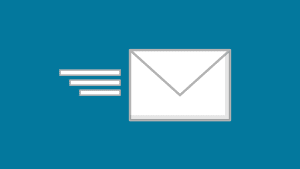You may spend hours or days creating the best Constant Contact email. However, your campaign is dead in the water if it is in the spam folder.
Fortunately, there are ways to avoid the dreaded spam folder. By identifying why your Constant Contact emails are landing in the junk folder and fixing the problem, you can prove to your ISPs that you deserve to land in your recipients’ inboxes. Let’s get started!
Why Are My Constant Contact Emails Going to Spam?
1. Poor Deliverability Rates
Constant Contact’s Email Deliverability Report tested the average deliverability rate of different email providers. These include Yahoo Mail, Gmail, and Outlook Mail. The report found that 17.19% of marketing emails were spam. 4.40% of Constant Contact emails got lost.
Such statistics are not good for email marketers. So, imagine if it’s a high-volume campaign. That’s 21.59% of emails not reaching the intended recipients’ inboxes.
The primary reasons that lead to poor deliverability rates include a poor sender reputation, complaints above 0.2%, and poor list quality.
How to Fix It
Improve the deliverability rate of your email campaigns by fixing the cause of the problem. If a poor sender reputation causes a poor deliverability rate, warm up your IP address and eliminate inactive, invalid, and spam addresses from your email list to keep it tidy.
You can also maximize your deliverability by using an email deliverability tool to test and optimize your emails before you broadcast them. Additionally, some tools even judge the deliverability of your campaign by analyzing its content.
2. Blacklisted IPs
Many spam complaints and trap hits lead to the blacklisting of your sending domain or your IP. The mailbox providers likewise monitor such lists to know which senders to filter or block from their user inbox.
How to Fix It
Avoid being blacklisted by sending relevant content to your recipients, or use a dedicated IP address when sending email campaigns.
Another solution is to visit the blacklist’s website and check your IP address there. The majority of blacklist databases offer general listing reasons. From there, you can get unblacklisted and work on why you’ve been blacklisted so it won’t happen again.
Don’t worry, though. When trying to get off the IP blacklist, you can always do so if you cooperate and follow the email marketing rules. Moreover, tell them that you know you have not done deliberate wrongdoing and that you’re a legitimate sender.
3. Email Infrastructure Issues
Different images come to mind when you hear the word infrastructure. It may include things like railways, power grids, and roads. However, there is invisible infrastructure surrounding us, like water systems, data and telephone networks and email infrastructure.
What is email infrastructure?
Email infrastructure is a system built to fuel the delivery of the transactional emails or newsletters you send out. Typically, an email infrastructure comprises the following components: mail agents, email reputation management tools, feedback loops, and IP addresses.
Without the proper foundation in email marketing setup, it would be challenging for your campaign to land in your recipient’s inbox.
How to Fix It
The best practice incorporates the three email authentication mechanisms: SPF, DKIM, and DMARC. Another tip is to set up a good email testing workflow. Test your message content, scripts, and delivery, while keeping your email marketing test data organized.
Is your email open rate falling low? If so, you’ll need the best email marketing strategies to increase them ASAP. Read on 30 Experts Share their #1 Tip to Improving Email Open Rates to make your open rate skyrocket.
4. Bad Email Design
A bad email design may not directly cause your Constant Contact emails to land in the spam folder. However, considering that most people view their emails on a mobile device, the likelihood of users marking your campaign as spam increases once your email does not properly render.
Remember that your email’s overall look and feel will impact your recipient’s decision to keep reading. Constant Contact may have available beautiful email templates, but you’ll still be the one to design your email to make it as visually effective and appealing as possible.
How to Fix It
Align your content with your marketing goals and ensure your content resonates with your recipients. As a result, you will achieve lead generation, better conversion, and email engagement. All these can motivate your readers to take action.
Use appropriate fonts, a simple layout, and compelling photos or graphics to break up chunks of text in your email.
Also, make sure your call-to-action stands out in your email and instructs the reader exactly what to do. Your CTA will be a magnet and open doors toward your landing page.
A/B test your email design
You may have to depend on analytics and your audience response to determine what email design works and what doesn’t. In addition, you may need to make updates and changes to the layout and design to get the most out of your campaign’s design.
A/B testing your email, like the layout, tone, CTA, colors, and white space, can help you choose what works best. Your final email design converts the greatest number of email recipients.
5. Content Triggered the Spam Filters
If any part of your email has spam trigger words or displays email practices as that of a spammer, it will trigger spam filters. As a result, your emails will land in the spam folder instead of the inbox.
Spam words trigger the wrong emotions, psychological manipulation, and a sense of fear, loss, and urgency. The usage of simple English phrases will not altogether alert spam filters. It will still depend on the context of the email.
For instance, genuine usage of the word “free” is acceptable. However, combining it with other words (i.e., free housing, free bank account) and repeating the same may ultimately trigger email spam filters.
How to Fix It
Avoid using words that could trigger spam filters. These words have been classified as pushy, evoking negative emotions, sleazy, or too manipulative.
Additionally, you can reduce the chance of your Constant Contact emails going to spam by avoiding writing emails that sound desperate, too good to be true, and pushy.
6. Lack of Proper Authentication
Internet Service Providers (ISPs), which refer to the major email providers, are constantly working to lessen the number of unwanted emails their customers receive in their inboxes. They do this by verifying if the email comes from a legitimate sender. In addition, they examine the source of the email.
That is why email authentication is important. It’s a set of methods to verify that an email is not forged. Furthermore, a lack of proper authentication may cause your Constant Contact email to land in spam.
How to Fix It
The most significant tactics to make you look more trustworthy as an email marketer include DKIM (DomainKeys Identified Mail), SPF (Sender Policy Framework), and DMARC (Domain-based Message Authentication, Reporting, and Conformance).
On the part of the recipient, email authentication protects them from phishing scams, spam, and other malicious emails.
Without email authentication, third parties may easily alter the source of emails or copy your unique branding to bypass spam filters. Or worse, third parties may trick your clients into believing their message is legitimate.
And as you know, impersonating your business is a threat to customer trust.
Do you find email authentication complex? Read more about SPF, DKIM, and DMARC to ensure the right records are in place.
7. Complicated Unsubscription Process
An unsubscribe link protects your email deliverability. It’s a link within your campaign that enables receivers to opt out of receiving newsletters for your services or products. Therefore, it’s necessary to maintain a legitimate and clean email list.
The good news is that the unsubscribe link is already required and inserted in the footer of every Constant Contact email. However, some marketers complicate the process, making email subscribers more frustrated.
Remember that they may still want to do business with you, and their email inboxes overflow, or they’re just not interested in your content.
How to Fix It
Take unsubscribes seriously. A GetApp survey shows that over 500 US-based internet users unsubscribe from an email newsletter because they receive too many emails, while some said they looked like spam.
A one-click unsubscription process is a good email marketing practice. Rather than forcing your recipients to receive newsletters from you, it’s better to provide them with an option to unsubscribe. Moreover, it’s better if you can provide your subscriber’s options to unsubscribe from certain publications or limit the frequency in which they receive emails from you.
8. Weak Subject Line
Email subject lines are a sensitive touch point. They’re every marketer’s ticket to stand out in a crowded inbox.
You can compel people to click through with a great email subject line. With a weak subject line, you may lose a subscriber. Or worse, your succeeding emails are marked as spam. Eventually, it’ll affect your credibility.
How to Fix It
Be creative and smart in writing your email subject line. Remember that about one-third of your recipients will open your email based on the subject line alone. So, avoid making your email subject line too wordy.
Again: Omit. Needless. Words.
Instead, get to the point and be specific. No email sent to your subscribers should come to them as a surprise. Therefore, set an expectation or promise and fulfill that promise. Be sure that there’s a clear benefit to your recipient. This email marketing solution works for every reader and every campaign.
We’ve covered the 3 Key Elements of Irresistible Email Subject Lines to help you write the best subject lines and increase your email open rate.
9. Negative Engagement
You want your recipients to do something when an email lands in their inbox: open it, star it or mark it as necessary, reply to it, or click a link in the email. These are all positive signals that your email is important.
If email clients will not open, immediately delete, or place your campaign in their spam email folder, it’s a red flag.
How to Fix It
Cultivate positive engagement. You can use several email marketing practices to lessen negative engagement. Email verification, re-engagement campaigns, and email validations are some ways to fix this. Doing these will signal the Internet Service Provider that you’re not sending spam emails.
10. Use of Open URLs
Let’s say you have a coffee shop and use email marketing to encourage people to check out your beverages and assortments of pastries and desserts.
To add a link to your website, you have two options: (1) Check out this week’s treats by visiting our website or (2) Check out this week’s treats by visiting coolcafe-example.com.
Both emails encourage the readers to visit the coffee shop’s website. However, the second one uses an Open URL or raw link. It’s also called a hyperlinked URL.
How to Fix It
Avoid using the second option because this can cause your email marketing emails to land in the recipient’s spam folder. Related to this problem is using URL shortening services, such as bit.ly. The solution to such an issue is to avoid using generic link shorteners.
11. Form Abuse
Another common reason you may have high spam complaints is that your forms are being abused. Spambots detect unprotected forms and submit invalid email addresses, causing an increase in bounce rate. Eventually, there will be spam complaints, which will quickly begin negatively affecting your sending reputation.
How to Fix It
Protect your email forms with honeypot fields or CAPTCHA to prevent them from being abused. You can also put safeguards to detect spam. For instance, you can block multiple submissions coming from the same IP address in a short time because they can be spam.
Reach the Inbox Today
Email marketing is highly effective – but only if your email lands in the inbox and you get the receiver to open the email.
Avoid the mistakes mapped out above so you can finally land in the inbox every time. And once you integrate the best email marketing practices into your campaign, you’ll start to see good results.
Checking everything off the list and having an email marketing strategy may take time, but it’s definitely worth the effort.
Tired of watching your email marketing campaigns miss the inbox? InboxAlly’s high deliverability ensures you will hit the inbox every time. Find out how this tool works!


